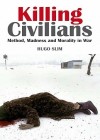Killing Civilians: Method, Madness and Morality in War
Written by: Hugo Slim,
Columbia University Press, New York, 2008,
ISBN: 9780199326549, 319pp.
Reviewed by: Dr Narelle Biedermann
Hugo Slim is a writer and scholar with a significant background in humanitarian operations. He could have easily chosen to take a preaching, moralistic stance in putting this book together. Instead, Killing Civilians is a remarkable piece of literature that approaches a unique, yet vitally important element of warfare and international violence from a realistic and pragmatic standpoint. Using accessible language and historical examples, Slim juxtaposes human psychology and history in a clever and engaging way. The book is replete with exemplars of murder and torture of civilians—non-combatants—from wars around the world that serves to reinforce man’s inhumanity to man.
The book is divided into four very apt and neatly compartmentalised sections. Part one explores the principles and complexities of civilians in war throughout history. Using historical examples from wars in Europe and Asia through to conventional policies overriding most wars in contemporary Africa, Slim highlights that protecting civilians or excluding them from involvement in war is impossible and that even with best intent, civilian casualties of some kind are inevitable.
Part two is divided into two chapters that set out to describe the seven spheres of civilian suffering: killing, injury and rape; and movement, impoverishment, famine, disease and distress. There are some particularly confronting historical and contemporary examples, but it is an important component that examines the many ways in which civilians suffer and how much of this suffering is a deliberate part of the strategy or cruelty of war.
Part three analyses why civilian suffering happens, exploring anti-civilian ideologies, the ambiguities of ‘civilian’ status, and the act of killing. Slim begins this part with a statement that ‘people do not kill civilians mindlessly’, and goes on to describe the most extreme form of anti-civilian ideology—genocide—as a mindful act in which civilians are not identified as ‘civilians’. Instead it sees whole groups of people whose eradication serves an outright political end. The three chapters that constitute part three serve to illustrate that the act of killing and inflicting human suffering is often a carefully orchestrated human endeavour.
Part four sets out to provide some small amount of realism with which to promote civilian protection. Simply repeating that civilian suffering is illegal and wrong, as many human rights groups tend to do, will do little to change potential perpetrators, he says. Appeals should rather be made to their self-interest, sense of fairness, even to old-fashioned virtues like mercy and honour. But with an almost perceptible shrug, Slim acknowledges that this probably will not work either.
One of the major challenges in protecting civilians from harm, suffering, violence and death is the difficulty in clearly defining who or what is a civilian. At first glance, this should seem easy. Certain members of any group of people—women, children, unarmed men, elderly, medical and religious professionals—could be described as fitting any loose categorisation of civilian, but in many cases throughout history, this has been proven incorrect. The Geneva Conventions, for example, provide a limited definition by suggesting what civilians are not; they are not members of an armed force, ergo they are civilians. Yet, history—and contemporary operations—tells us that this is simply not true. The line grows fuzzier the deeper one explores this complex issue.
What is particularly refreshing in Slim’s approach to this body of work is that he is clearly a realist. He isn’t writing an idealistic or naïve version of death and suffering of ‘innocent’ civilians that can be reversed through some enforced hand-holding and conversations over a negotiation table. He unapologetically presents the ambiguities that are associated with warfare, human behaviour, the presence of civilians and limiting violence. He also outlines the complexities of what we in the Western world call radical ideologies. As Slim himself concedes, there are rarely totally innocent bystanders in wartime. In 2002, Osama bin Laden announced that every citizen of any democracy that participates in war is ‘non-innocent’ (p. 198)—and is therefore a legitimate target—because their political systems allow them to choose their leaders and thus, to choose their wars.
This is a fine book that must make an important contribution to military thinking and should get the attention it rightly deserves. Slim notes in his epilogue that this book may serve to help people to ‘recognise the ideologies that drive deliberate civilian suffering so that they can anticipate them, undermine their logic and act against them in the wars that are to come’. For this reason, this book should be essential reading for senior commanders, operational planners, specialists, and unit-level soldiers and officers.

